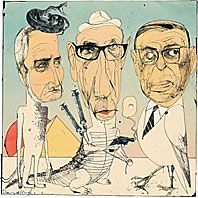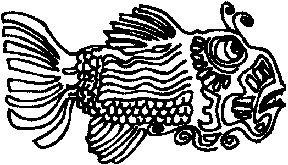- Daily DreamTime

- Art Resume
- Work Resume
- Photographic Memories
- Addict Review
- Sifnos Review
- Samantha's story

Viewers and participants of these webpages should be reminded that the Society and the Organization exhibits images, ideas and dreams whose histories are authentic but whose actuality succeeds or fails (depending on how you look at it) to reside in the regular precepts of normality and acceptance.

MOON PHAZE
Mills Gets Under the Skin Of the City
Friday, February 14, 2003; Page WE41
WHEN ARTIST Joe Mills speaks of his past battles with mental illness -- and of the art that helped heal him -- it is almost with the gentle euphemism of a Blanche DuBois.
He talks of the "delicate nature" of his mind, of having been close to "lost," of "genuflecting" before the diseased and broken street people he photographed during the 1980s as he shot "from the hip" with a camera held by his side, kneeling if he had to capture the corroded-looking skin of a homeless person's ankle.
Skin seems a subject of more than mild interest to Mills, whose troubling and deeply beautiful street photography and surrealist collage work mounted on found objects are the focus of two stunning local shows at the Corcoran Gallery of Art and Hemphill Fine Arts. As he leads a tour of his Corcoran exhibition, the first solo museum show for the local artist, he tells of how one subject used to drink Skin Bracer, and how the flesh of the man's sore-eaten hand looked like the upholstery on a piece of badly used furniture as a result.
In conversation, Mills speaks metaphorically of a city's "skin," and how he believes it sheds it every decade or so. Moments later, he amends that figure of speech, describing the changes that occur in a place's urban core as a kind of "callousing." When he discusses his unorthodox habit of coating his pictures with marine spar varnish, he doesn't use the word "skin," but it is hard not to think of the yellowing coating, in which insects, hairs and other imperfections are sometimes caught, as a kind of epidermis that both protects and deteriorates over time. Although the title of the Corcoran show, "Inner City," refers most obviously to a kind of city within the artist's head, it also suggests a kind of city within a city, an unreality that exists behind the reality of the surface -- or vice versa.
On Saturday morning from 10 to 11:30 at Hemphill Fine Arts, Mills will talk about his work, the full spectrum of which is represented in these two shows. Printed on long-expired photographic paper whose age-induced blemishes lend the prints a decayed, antique quality, Mills's street photography of the '80s exists somewhere between documentary and hallucination. What is perhaps the most surprising, though, is the connection of his street photography to his collage and photomontage work, which can call up both mundane and nightmarish associations.
Mills's art shows us both the world's skin -- and the imaginary ants that are crawling beneath it.
JOSEPH MILLS: INNER CITY -- Through April 14 at the Corcoran Gallery of Art, 500 17th St. NW (Metro: Farragut West); 202-639-1700. www.corcoran.org . Open daily 10 to 5 except Tuesdays; Thursdays to 9. $5, seniors and guests of members $3, students $1, family groups $8. Free Mondays and Thursdays after 5.
JOSEPH MILLS: PHOTOMONTAGECOLLAGE -- Through March 8 at Hemphill Fine Arts, 1027 33rd St. NW; 202-342-5610. www.hemphillfinearts.com . Open Tuesday-Saturday 10 to 5 and by appointment. Free.
Reservations are required for Mills's Saturday talk. $12.

-- Michael O'Sullivan
© 2003 The Washington Post Company
Postcards From the Edge Joe Mills Turned Mental Illness Into Photographs By Jessica Dawson Special to The Washington Post Thursday, February 13, 2003; Page C05
Joe Mills is liable to be candid, gallerist George Hemphill warned. Sometimes, he added, "embarrassingly so." This wasn't news to me. When the 51-year-old photographer responded to my first e-mail, he added, by way of introduction, a paragraph detailing the aftereffects of his mental breakdown and institutionalization at age 21:
"I came out like a newborn, fragile, totally vulnerable, but with an unshakable knowledge of there being great meaning to this life, of there being an undeniable harmony to 'things,' of there being absolute truth, one that is mirrored by art that is pure."
Since this episode, Mills has striven to make art that does justice to the purity he discovered. The artist's efforts, now on view in two shows in the District, one at Hemphill Fine Arts in Georgetown, the other opening this weekend at the Corcoran Gallery, were considerable.
"Joe had an experience of complete suspension of rational thought," says Paul Roth, who as assistant curator of photography and media arts at the Corcoran Gallery compiled Mills's first solo museum show, "Joseph Mills: Inner City," which opens on Saturday. The 70-plus photographs on view are unflinching glimpses at life on the streets. "Maybe he has access to something the rest of us don't," Roth offers.
During those months when he lost touch with reality, and in contending with subsequent bouts with mental illness, Mills figures he discovered rare creative territory. Now 30-plus years into a photography career, he makes pictures and collages milking that altered state. Not unlike the surrealists, he free-associates visually to free himself from conventional, rational thinking. He hopes to mine this jumbled material for more profound truths.
Mills likens his piecing together of collages to using a Ouija board. "The less you think about it," he says, "the better it works." The images in the many works of this kind on view at Hemphill's Georgetown gallery could have been culled from nightmares. Cocked guns, one-eyed women and tentacled heads all make appearances.
In his street work, Mills documents real-life horrors -- specifically, the gravelly patches of flesh and missing limbs of the destitute denizens of downtown Washington. For about six years beginning in the early 1980s, Mills shot 50,000 frames there. Aiming his camera from the hip instead of looking through the viewfinder, he let chance enter into his compositions. He snapped while he spoke with his subjects or offered them a smoke. "I was getting involved with people's deformities, people's scars," he remembers. "I wasn't happy till I was two inches away from them."
By the time he gave up shooting downtown, he figured the work he'd done there for a failure. Just four years ago, Mills revisited the negatives and found a treasure-trove of significant material, which he printed. It now makes up the whole Corcoran show. Here was another case, Mills said, of "finding, not making."
On District streets, Mills found feet so cracked and dry they have pus-dripping sores. He found a man who scratched straight through his own skin and a woman with nails as long as her fingers. These are some of the toughest shots in the Corcoran show, and they are not the sum of it. There are some brighter moments, but not many.
Mills printed the Corcoran pictures on expired black-and-white photo paper. That makes almost all the pictures look jaundiced, thanks to the paper's weakening chemicals. A few have hints of blush or green or blue, too. Many are so blanched they appear overexposed.
While photographers Diane Arbus and Robert Frank inform this work, Mills says much of his style comes from from his parents. He describes his mother, Anna, as a cross between Martha Stewart and an angel. "If you crawled into a bed she made, it was like crawling back in the womb." But it was Mills's flamboyant, hard-living father, Jack, who really captured the young artist's formidable imagination. Born with a disfigured foot that fascinated Joe, he had perfected a swagger, love of sports cars and strong taste for conservative politics that mesmerized his son. Mills senior invited Wisconsin senator Joseph McCarthy to be Joe's godfather. When Joe turned 10, the family left Milwaukee for Washington so his father could pursue work with Capitol Hill's Republican leadership. His father went through personal problems in Washington, and Joe's disillusionment was profound. The artist attributes much of his breakdown to this pain.
"I don't think you can underplay the effect of that kind of biography" on Mills's work, says photographer Colby Caldwell, Mills's longtime friend and godfather to his son Dorian.
"On the inside, I was just a disaster," Mills recalls of his ongoing psychic strife. When photographing the mentally ill and homeless on the street, he says, "I took solace in being next to disasters that are more obvious. There were times I wished I could exchange bodies with some of those hunchbacks."
For all their absurdity or grotesqueness, the images bearing Mills's signature reveal beauty, too. It's not a traditional flowers-and-hearts kind of beauty, but a beauty that comes from commitment to truth and lack of judgment. Yes, these pictures are tough to look at. No, we didn't ask to see life quite this bleak. But Mills didn't ask to see it, either.
Joseph Mills: Inner City at the Corcoran Gallery of Art, 500 17th St. NW. Open daily except Tuesday 10 a.m.-5 p.m., extended hours Thursday until 9 p.m., to April 14. Call 202-639-1700.
Photomontagecollage at Hemphill Fine Arts, 1027 33rd St. NW, Tuesday-Saturday 10 a.m.-5 p.m., to March 8. Call 202-342-5610.
© 2003 The Washington Post Company
junkie java quiz
super cool links
Chris keeley's resume
secret surrealist society artwork
dead friends
newest sss art
Chris keeley's art galleries
rationalize,minimize and denial statements
the Intervention Organization
five and ten press - consulting iconoclast
Chris Keeley's Social Documentary Photography
activism
Art links
Big brother
Blinded by Science
Darkside / Gothic
Dharma Road
G E E K
Maul
Music
Pirate
radio
W E I R D O
What's Mailart
Mailart List
Scanner Links
Drugs
Photographs
Art
Out of the Dark
Art
In to the Light
Art
Collage DaDa
Art
Send me email!

Return to Intervention Organization